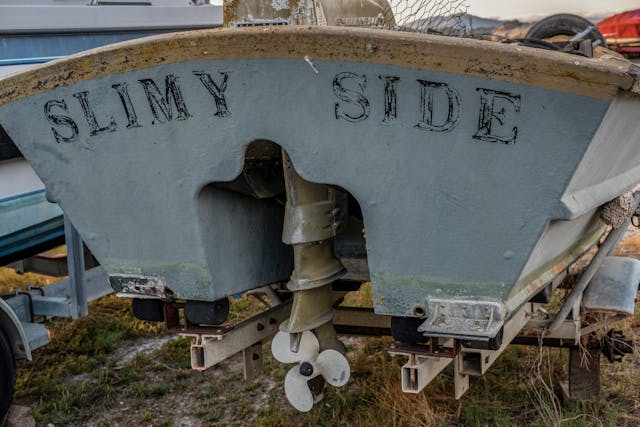Discover the J2RC0C 1985 outboard maintenance guide packed with expert tips, real fixes, and DIY secrets you need today.
There’s something magnetic about vintage machinery, and the 1985 J2RC0C Johnson outboard motor is no exception. Whether you stumbled upon one at a garage sale or inherited it from a grandparent who swore it “still runs like a beast,” this motor has grit. But here’s the catch, machines from this era demand love, patience, and deep mechanical respect.
This isn’t just a basic owner’s guide. It’s a full-bodied, battle-tested manual for keeping your J2RC0C roaring through the water. We’ll dive into quirks, hacks, myth-busting, real user experiences, and advanced maintenance that even seasoned boaters might not know.
So roll up your sleeves. Let’s keep this outboard alive, and better than it was in ’85.
What You'll Discover:
Quick Specs You Can’t Ignore
Let’s begin with a quick gut-check on what you’re working with:
- Model: Johnson 2HP J2RC0C
- Year: 1985
- Engine Type: 2-Stroke, Single Cylinder
- Fuel Mix: 50:1 gas/oil ratio
- Cooling System: Water-cooled
- Ignition: Magneto
- Weight: Around 27 lbs
Why this matters? Because knowing your engine’s anatomy keeps you from guessing, and guessing leads to busted pistons and wasted weekends.
The Forgotten Magic of 2-Strokes
Here’s the beauty of a 2-stroke like the J2RC0C: it’s simpler, lighter, and punchier than its 4-stroke cousins. But simple doesn’t mean careless. These engines age like vinyl, they sound better if you clean the dust and respect the grooves.
A neglected 2-stroke becomes a sputtering mess. But with the right rhythm of maintenance, you’ll get a motor that kicks alive on the second pull, purrs like a beast, and carries you far from shore with no drama.
Fuel System Maintenance: The Heartbeat
Neglect the fuel system and you’re not going anywhere. Period.
Cleaning the Carburetor
Over time, especially with modern ethanol-laced fuel, your carb turns into a gummy tomb. Here’s your ritual:
- Remove the carburetor and open it up.
- Soak it in a carb cleaner solution overnight.
- Use compressed air to clean jets and passages.
- Replace any cracked gaskets or brittle rubber.
Pro Tip: Don’t over-tighten the bowl screws, this isn’t a lug nut, it’s precision work.
Fuel Mix and Oil Quality
The old-school 50:1 mix still applies. But upgrade the oil:
- Use modern NMMA-certified TC-W3 oil.
- Mix with fresh, ethanol-free gasoline if possible.
Old outboards weren’t made for modern fuels. Ethanol can wreck seals and attract moisture. So either treat your fuel with a stabilizer or hunt down ethanol-free gas.
Ignition System: That Sneaky Trouble-Maker
Spark Plug Ritual
The spark plug in a J2RC0C is like the soul of the engine, it speaks.
Check it every 10 hours of use:
- Clean the electrode with a wire brush or replace it if fouled.
- Gap it correctly (usually around .030 inches).
- Look at the color: tan = perfect, black = rich, white = lean.
If your engine won’t start, chances are this little plug is either too old or just screaming for a cleaning.
Points and Magneto
Yeah, this motor still uses points ignition, and it’s a fiddly beast.
- Inspect the flywheel magnets and clean them with alcohol.
- Check for wear on the contact points.
- File or replace if pitted.
- Use a feeler gauge to set the gap correctly (usually .020″).
This part feels arcane, but it’s what separates a reliable pull-start from shoulder-tendon regret.
Cooling System: Avoiding the Boil
You’d be shocked how many folks destroy their outboards by ignoring the cooling system.
Impeller Replacement
The impeller is your water pump. It lives in the lower unit and spins like mad. If it fails, your engine overheats.
Signs of failure:
- Weak or no telltale stream
- Steam or hissing sounds
- Engine running hot to the touch
Replace it every 2 years, or annually if you run in muddy or sandy water.
Steps (Simplified):
- Drop the lower unit
- Unscrew the water pump housing
- Replace the rubber impeller and gaskets
- Reassemble carefully
Lower Unit: That Greasy Underdog
The lower unit is like the transmission for your outboard, it channels power from the engine to the prop.
Gear Oil Check
Use marine-grade gear oil. Here’s how to check:
- Remove the lower drain screw first (to prevent suction).
- Then unscrew the top vent plug.
- Let oil drain into a pan.
If it’s milky, water has invaded, replace all seals. If it’s black and gritty, your gears are grinding, inspect internals ASAP.
Refill until oil spills slightly out of the top vent plug.
Propeller and Driveshaft Care
That prop might seem simple, but it’s a silent warrior.
Propeller Tips
- Remove and inspect for fishing line wrapped around the shaft.
- File minor dings; replace badly bent props.
- Grease the spline before reinstallation.
A stuck prop can shred your driveshaft seals, and then you’re in for a teardown.
Storage and Off-Season Habits That Matter
You can’t just yank the motor off and toss it in the shed. Not unless you like rusted cylinders and seized pistons.
Prepping for Long Storage
- Drain fuel from tank AND carburetor.
- Fog the cylinders with fogging oil.
- Remove and inspect the spark plug.
- Store upright in a dry, cool place.
For bonus longevity, pull the recoil starter every month or so to keep parts loose.
Common J2RC0C Issues (and Real Fixes)
Let’s get honest. Every engine has its “thing.” Here’s what crops up again and again with the J2RC0C:
| Problem | Cause | Fix |
| No Start | Fouled spark plug or dirty carb | Clean/replace |
| Overheating | Bad impeller | Replace impeller |
| Won’t Stay Running | Vacuum leak or wrong fuel mix | Check hoses, retune carb |
| Vibrates Excessively | Damaged prop or loose mount | Inspect prop, tighten bolts |
These aren’t hypothetical. They’re pulled straight from DIY forums and boatyard benches.
Secret Hacks From Veteran Users
Here’s what manuals won’t tell you, but old-timers swear by:
- Pencil Torch Trick: Use a micro torch to heat stuck bolts. Works better than brute force.
- DIY Carb Gasket: Cut your own from a cereal box in a pinch. Not ideal, but saves a trip.
- Toothbrush Fuel Line Cleaner: Run a small brush through old lines to clear varnish gunk.
- Compact Tackle Box Toolkit: Keep feeler gauges, spark plug, wrench, mini oil bottle, and starter rope in your boat’s tackle box.
Is It Worth Restoring a J2RC0C in 2025?
Absolutely. If you’re reading this, you already know there’s charm in old-school simplicity. The J2RC0C isn’t just a piece of machinery, it’s a mechanical rite of passage.
Yes, newer motors are quieter and cleaner. But they’re also loaded with electronics and sensors that fail in salty, humid environments.
The J2RC0C? It’s raw. It’s real. And with a little care, it’ll outlive most things on your boat.
Key Takings
- The J2RC0C Johnson 2HP outboard (1985) is a robust, no-nonsense 2-stroke engine that thrives with regular care.
- Fuel quality and carb cleaning are non-negotiables, ethanol kills old engines.
- The ignition system, especially the spark plug and magneto, demands close inspection every few outings.
- Impeller replacement is the #1 way to avoid overheating, do it proactively, not reactively.
- Drain fuel and fog the cylinders before storage to keep internal parts from seizing.
- Gear oil condition tells a lot, milky means water intrusion, time to act fast.
- Prop care matters, dings, fishing lines, or dry splines can silently destroy your lower unit.
- Veteran hacks like the pencil torch or DIY gaskets can rescue you mid-trip, knowledge beats brute force.
- This motor is worth restoring in 2025, not just for nostalgia, but for its bulletproof simplicity.





